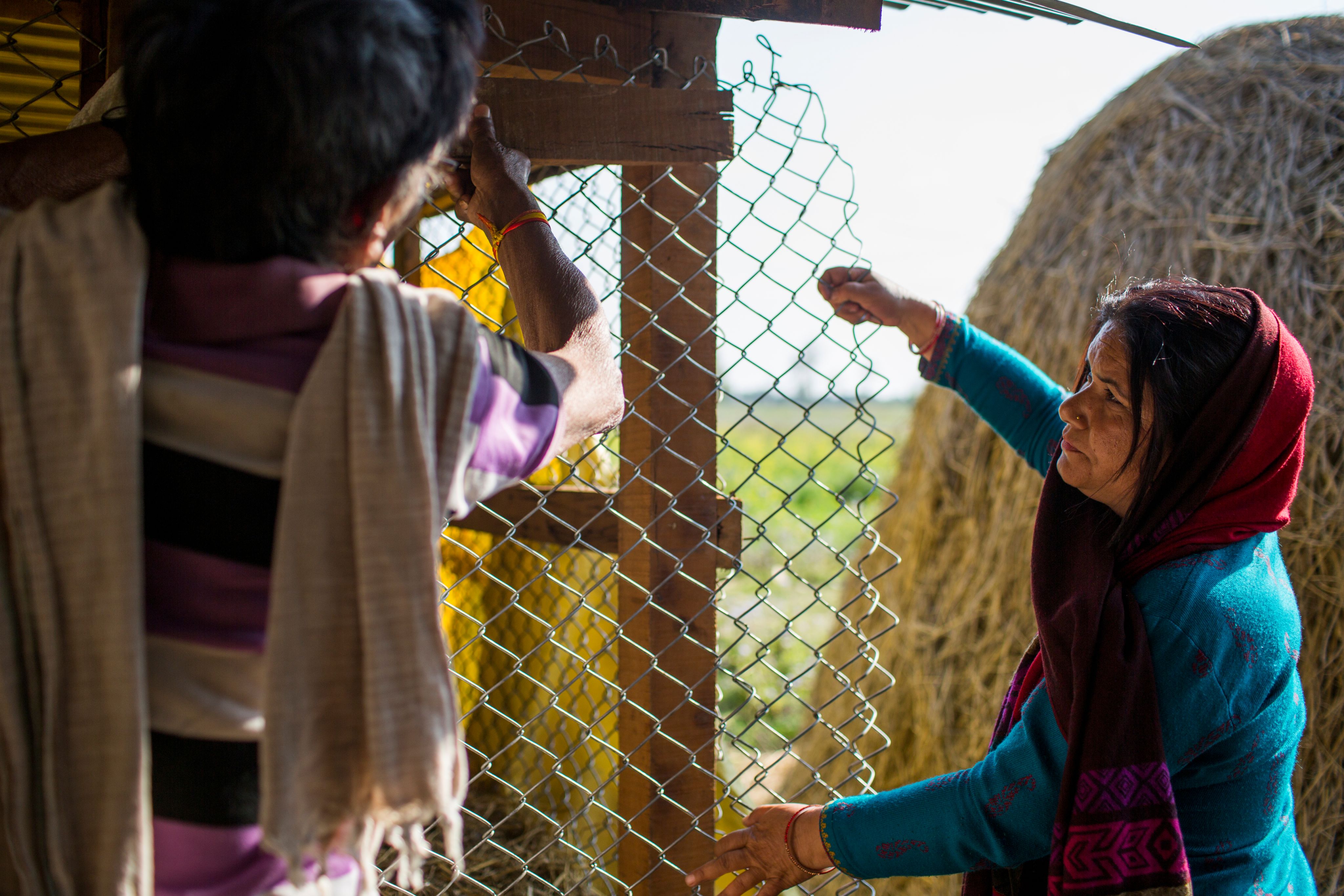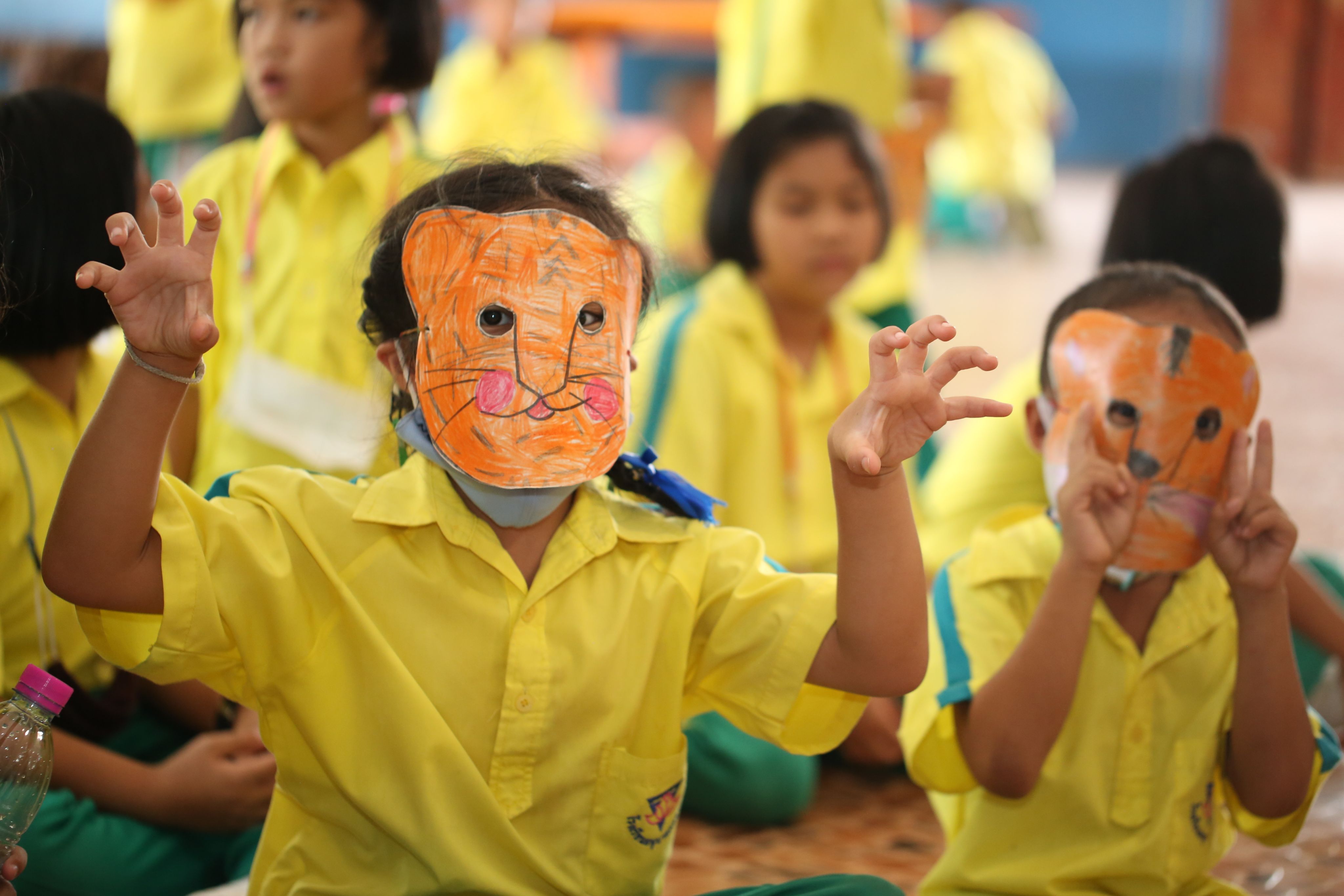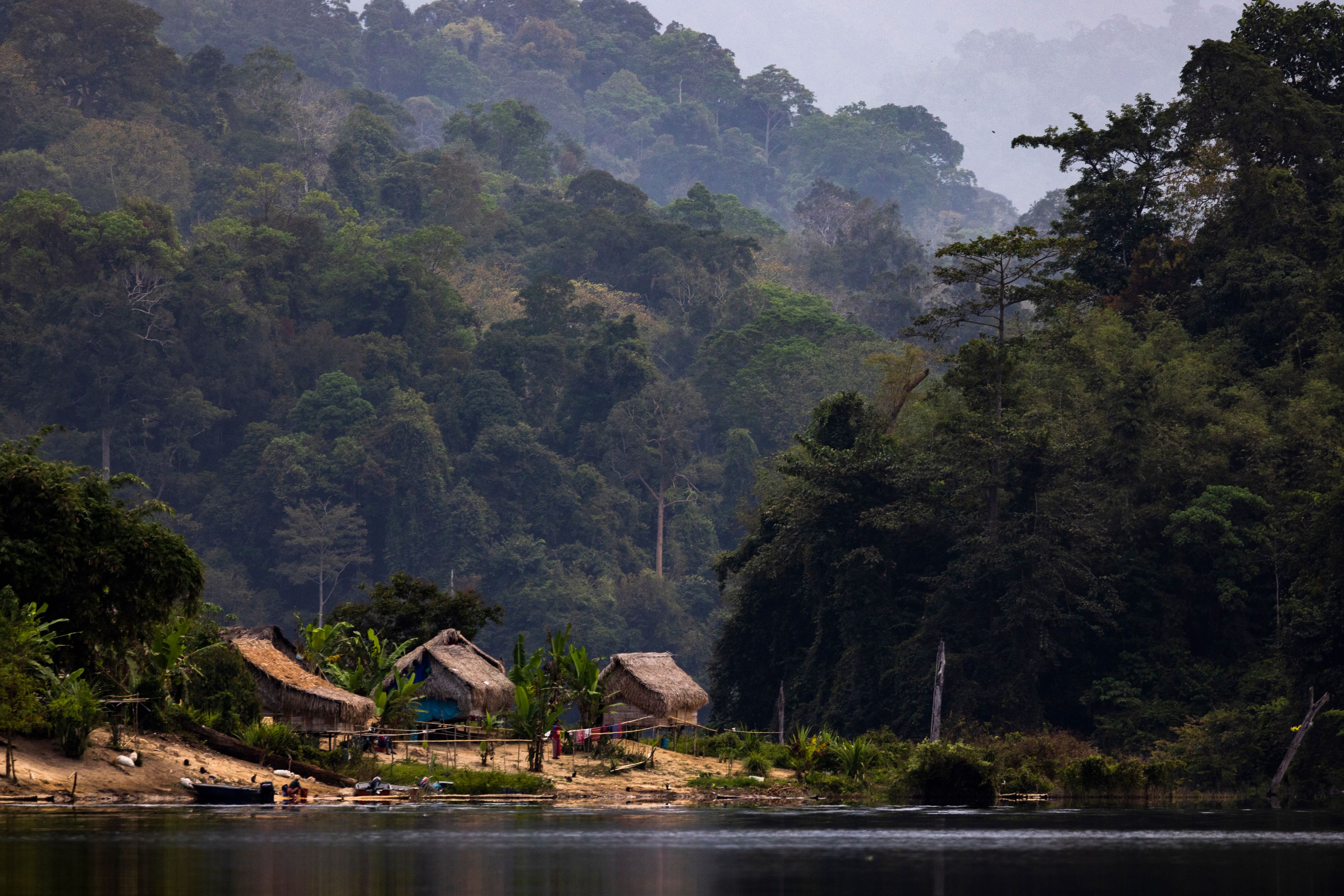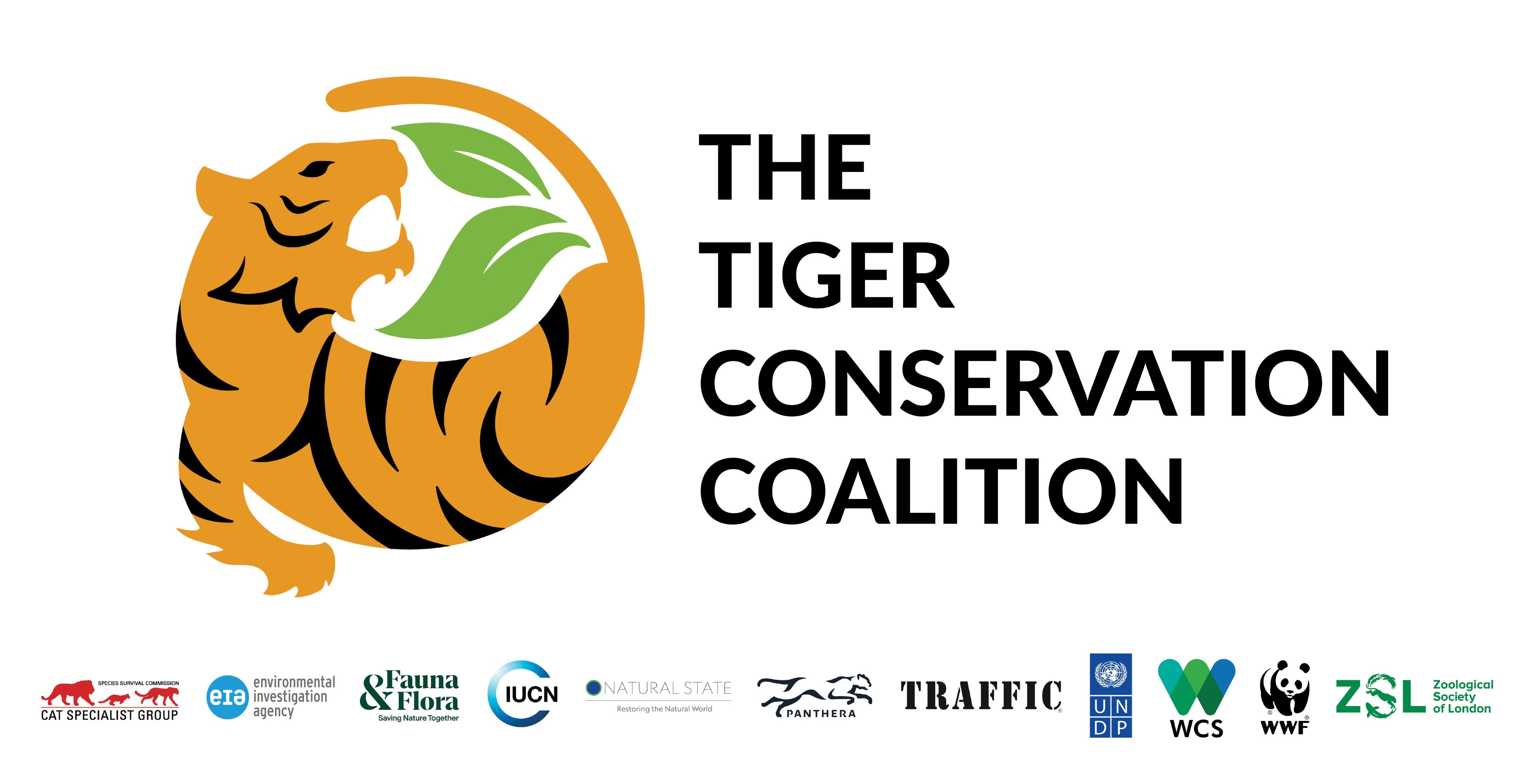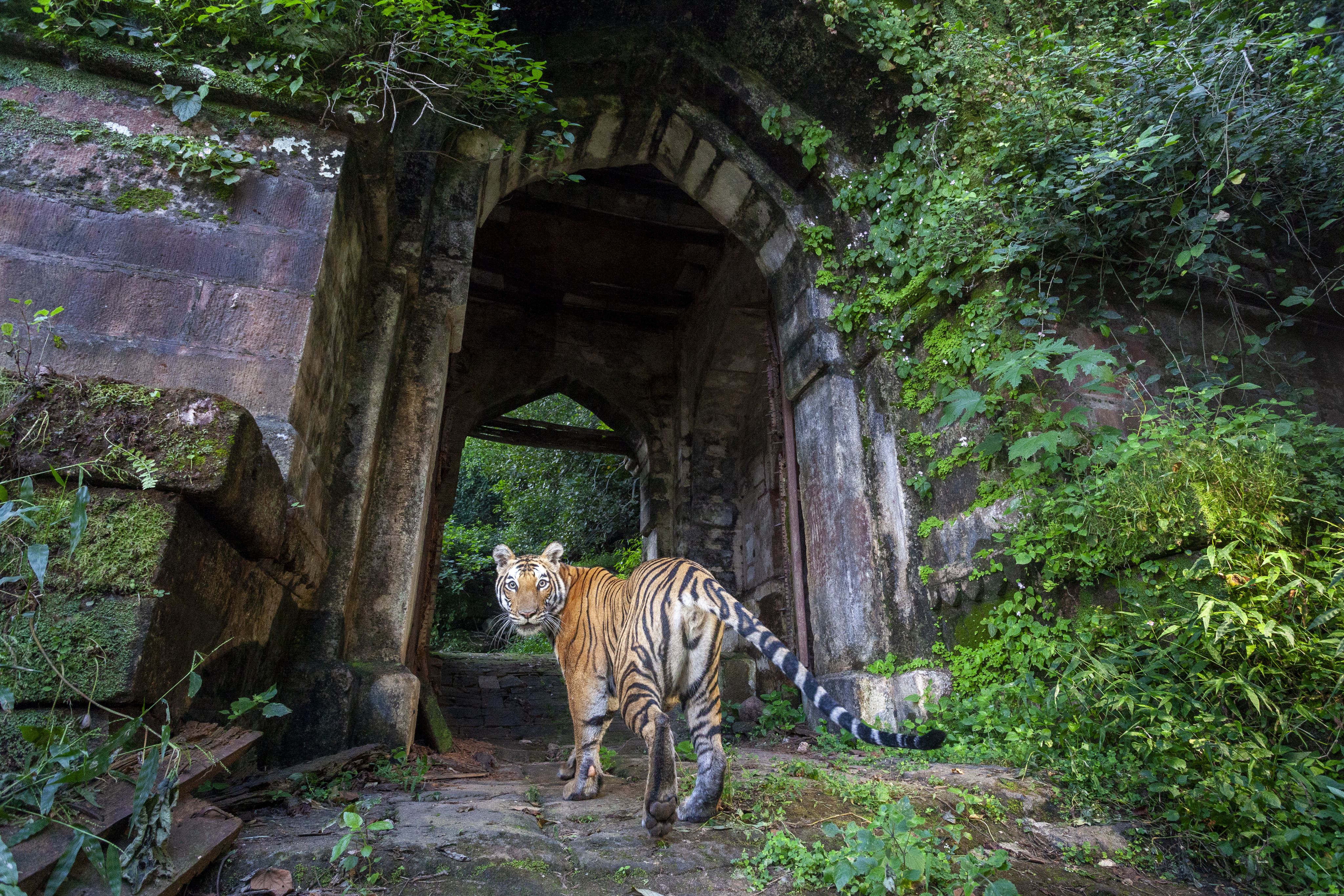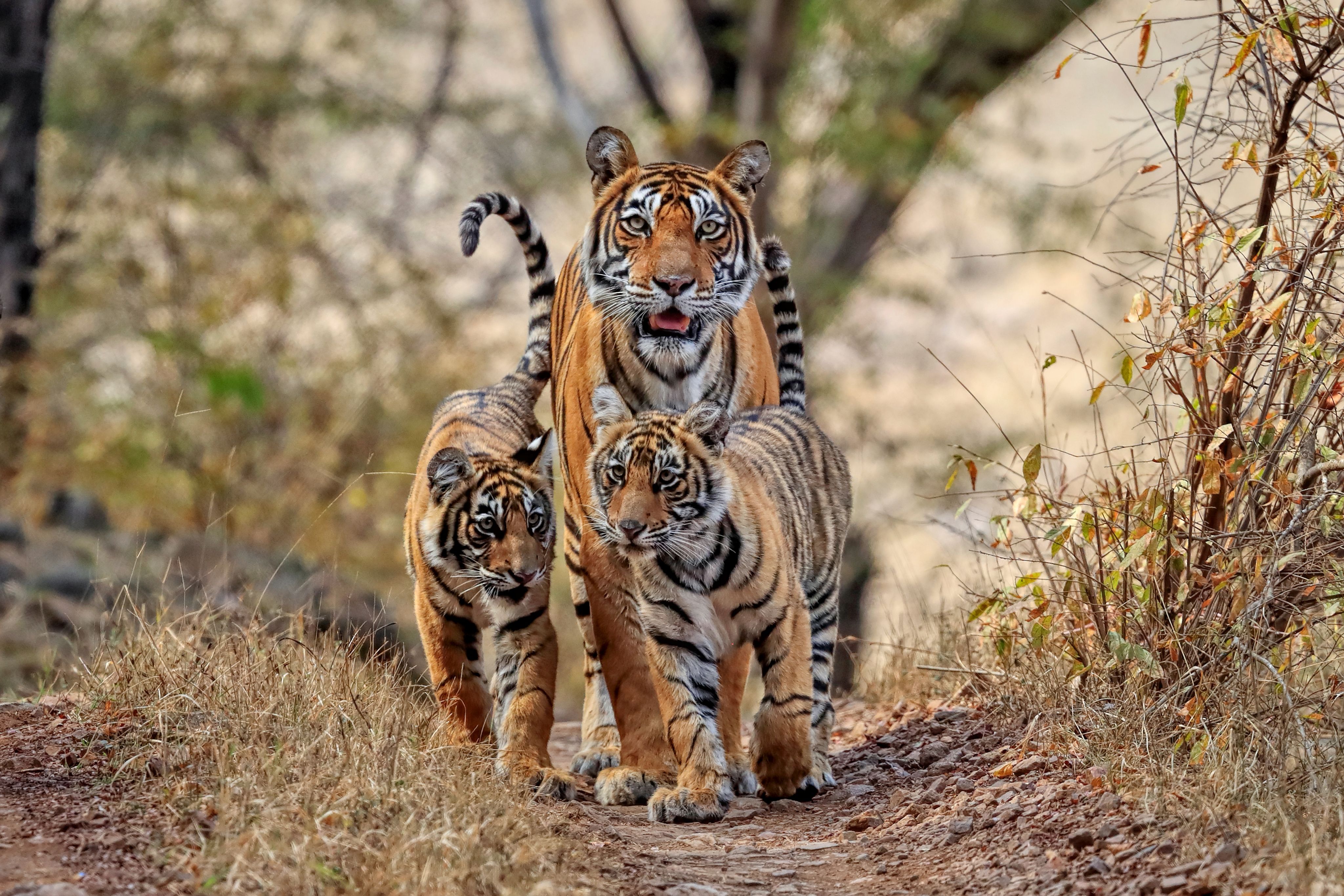looking ahead
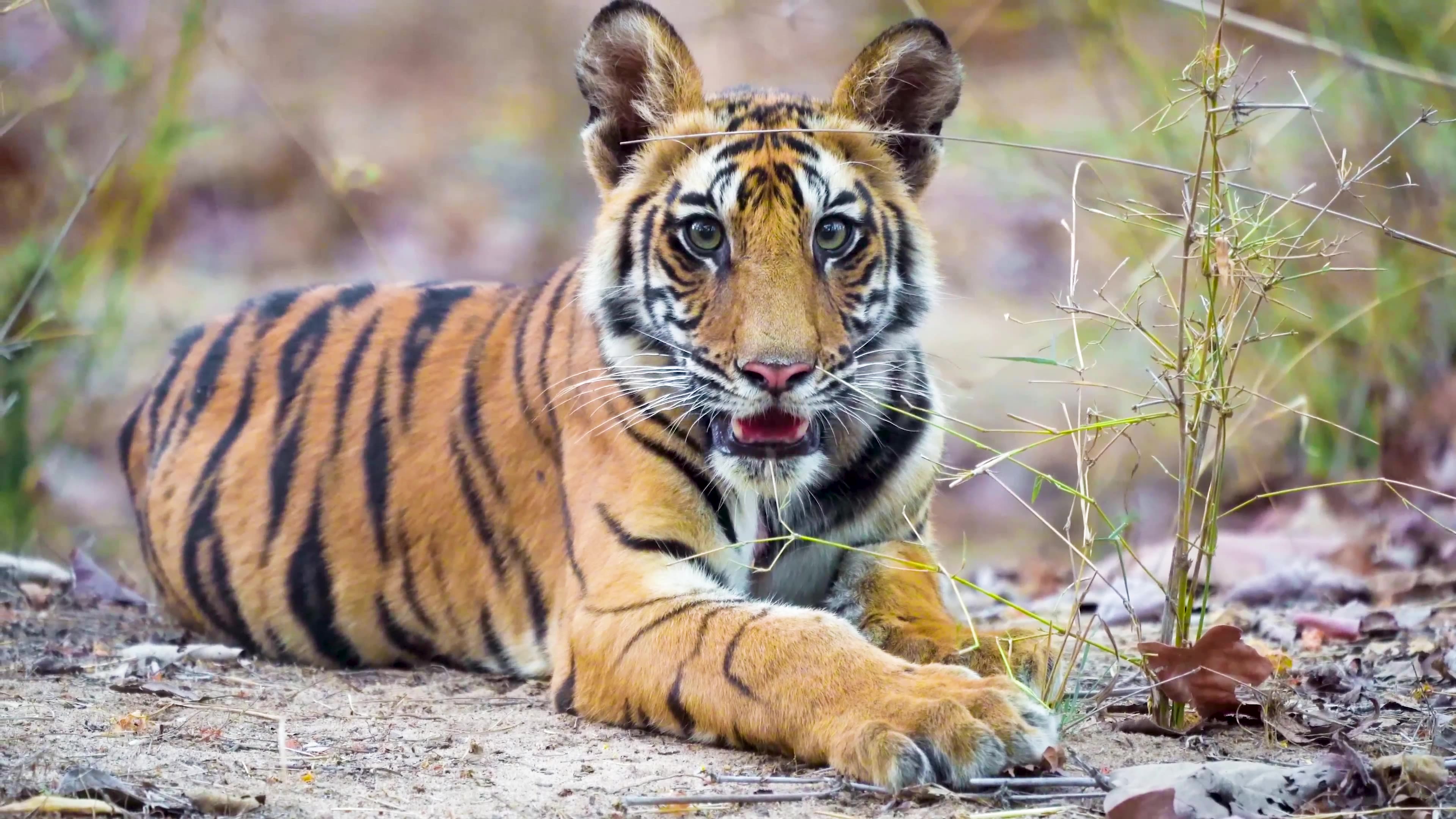
The challenges for conserving and recovering tiger populations are great, but so is the opportunity for transformative change and realising co-benefits for nature, other wildlife and ourselves. Over the next few years, WWF will continue to expand efforts in key tiger landscapes, deepen partnerships, and scale up the impacts from projects already showing positive results. We are also striving to support the realisation of local stewardship for tiger conservation with Indigenous Peoples and local communities through multiple tailored approaches, depending on their context, interests, challenges and motivations. Innovation will remain at the core of our approach, and we will continually refine our strategies, learning from past experiences to maximize our impact.
Maya Yogi, part of the Terai Arc Landscape Program (Nepal) is installing predator proof fencing with villagers to reduce conflict with wildlife. © Emmanuel Rondeau / WWF US
Maya Yogi, part of the Terai Arc Landscape Program (Nepal) is installing predator proof fencing with villagers to reduce conflict with wildlife. © Emmanuel Rondeau / WWF US
Tiger Learning Center (‘Sor Seua Witthaya’ in Thai) aims to raise awareness about tiger and wildlife conservation at Anuban Khlong Lan School, near Mae Wong National Park. © WWF-Thailand
Tiger Learning Center (‘Sor Seua Witthaya’ in Thai) aims to raise awareness about tiger and wildlife conservation at Anuban Khlong Lan School, near Mae Wong National Park. © WWF-Thailand
Indigenous Village of Klewang in Royal Belum State Park. © Emmanuel Rondeau/WWF-US
Indigenous Village of Klewang in Royal Belum State Park. © Emmanuel Rondeau/WWF-US
The Tiger Conservation Coalition is a game-changing partnership that amplifies the reach and impact of our collective efforts. Together, we are positioning ourselves to tackle issues that no single NGO can solve. In partnership with the Royal Government of Bhutan, we have set an ambitious goal to mobilize an additional $1 billion in sustainable financing. This funding will help us scale efforts to protect some of Asia’s most vital ecosystems, furthering our shared vision for the future of tiger conservation. The momentum is building, and we are actively developing the tools, mechanisms, and partnerships needed to make this vision a reality.
Ground breaking projects aimed at expanding tiger habitats are already yielding promising results. In Kazakhstan, the return of tigers after a 70-year absence marks a historic achievement for the region. Similarly, efforts in China and Thailand to restore areas where tigers once roamed offer hope for the establishment of new populations. These successes demonstrate that with vision, investment, and collaboration, species recovery is possible—and that tigers can once again inhabit their historic ranges.
As tiger populations have recovered in some areas, age-old conflicts have emerged but in a much-changed space. Developing and expanding coexistence strategies to minimize the risk and also the negative impact of interactions between tigers and people continues to be an urgent and growing priority.
A tiger walks through entrance gate of ruins of Bandhavgarh Fort, Bandhavgarh Tiger Reserve, India. © Yashpal Rathore / naturepl.com / WWF
A tiger walks through entrance gate of ruins of Bandhavgarh Fort, Bandhavgarh Tiger Reserve, India. © Yashpal Rathore / naturepl.com / WWF
We also know that sustained progress depends on our continued fight against illegal wildlife trade. The demand for tiger parts and products remains a major threat to their survival, and we must maintain a steadfast commitment to combat poaching, trafficking, and illegal trade. Equally pressing is the depletion of tiger prey species, driven by overhunting in many regions. The loss of prey not only jeopardizes tiger health but also hinders population recovery. Addressing the overexploitation of prey is therefore essential to the success of our conservation efforts.
The momentum we’ve built through collaboration and innovation gives us hope, but we must also acknowledge that the journey ahead will be long, and the challenges formidable. Now, more than ever is the time to move forward with urgency. The tiger’s future—like the health of the landscapes it inhabits—depends on our actions today.
Thank You
None of this would be possible without the dedication and support of our partners and donors. Your commitment to the WWF Tigers Alive Initiative has enabled us to push the conservation boundaries for tigers, which conserves a myriad of other species and habitats and benefits the communities whose survival depends on the same natural systems.
We are on a mission to ensure tigers thrive for generations to come - join us.
Find out more:
© Andy Rouse / naturepl.com / WWF
© Andy Rouse / naturepl.com / WWF

